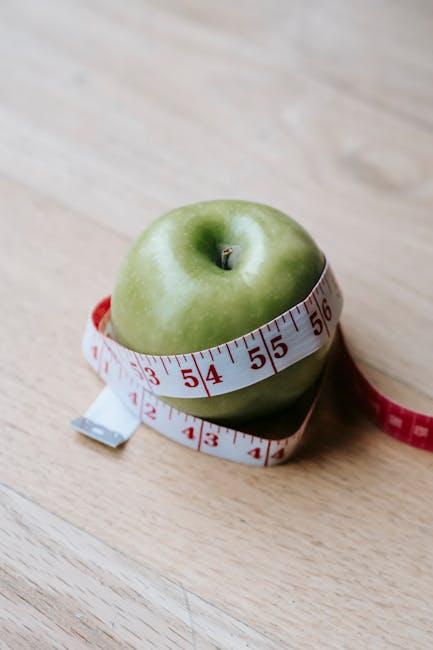Managing portion control can often feel like walking a tightrope. On one side, you have the desire to enjoy your favorite foods, and on the other, the need to maintain a balanced diet. It’s easy to fall into the trap of thinking that portion control means depriving yourself of the foods you love. However, it doesn’t have to be this way. In this article, we will explore practical strategies for managing portion sizes without the accompanying sense of deprivation. By adopting these mindful eating practices, you can enjoy your meals, feel satisfied, and stay on track with your health goals. Let’s embark on this journey together, with empathy and understanding, to find a balanced approach that works for you.
Understanding Your Hunger Cues and Emotional Triggers
Recognizing the difference between physical hunger and emotional cravings is a critical step towards managing portion control effectively. Physical hunger develops gradually, can be satisfied with any food, and is often accompanied by physical symptoms like a growling stomach. In contrast, emotional hunger comes on suddenly, craves specific comfort foods, and is often linked to emotional states such as stress, boredom, or sadness. To help identify and manage these triggers, consider the following:
- Keep a Food Journal: Track what you eat, when you eat, and how you feel at the time. This can help you identify patterns and emotional triggers.
- Practice Mindful Eating: Slow down and savor each bite. This not only helps you enjoy your food more but also gives your body time to signal when it’s full.
- Find Alternatives: If you notice you’re eating out of boredom or stress, find other activities to distract or calm yourself, such as going for a walk, reading a book, or practicing a hobby.

Choosing Nutrient-Dense Foods for Maximum Satisfaction
One of the best ways to manage portion control without feeling deprived is by incorporating nutrient-dense foods into your meals. These foods are packed with vitamins, minerals, and other essential nutrients, which help you feel full and satisfied. Some examples of nutrient-dense foods include:
- Leafy greens: Spinach, kale, and Swiss chard are low in calories but high in fiber and essential nutrients.
- Lean proteins: Chicken breast, turkey, tofu, and legumes are excellent sources of protein that can keep hunger at bay.
- Whole grains: Brown rice, quinoa, and oats provide long-lasting energy and are rich in fiber.
- Healthy fats: Avocados, nuts, seeds, and olive oil offer satiety and are vital for brain health.
By focusing on these nutrient-dense options, you can create balanced meals that are both satisfying and nourishing. This approach helps you control portions naturally, as your body receives the nutrients it needs, reducing cravings and the urge to overeat.

Mindful Eating: Techniques to Savor Every Bite
Embracing mindful eating starts with truly appreciating the flavors, textures, and aromas of your meals. This sensory engagement can transform your eating habits, making portion control feel like a natural part of your routine rather than a restrictive measure. Here are some techniques to help you savor every bite:
- Chew Thoroughly: Take the time to chew each bite thoroughly. This not only aids digestion but also allows you to fully experience the taste and texture of your food.
- Pause Between Bites: Put your fork down between bites and take a moment to breathe. This pause helps you recognize your body’s signals of fullness.
- Eliminate Distractions: Eat without the TV, phone, or computer. Being present during your meals helps you focus on the act of eating and prevents overeating.
- Small Plates, Big Impact: Use smaller plates to naturally control portion sizes. A full small plate can be more satisfying than a half-empty large one.
By integrating these mindful eating practices into your daily routine, you can enjoy your food more and manage portion sizes effortlessly, all while feeling satisfied and nourished.

Practical Tips for Portioning Meals at Home and On-the-Go
Mastering the art of portion control can transform your eating habits without leaving you feeling deprived. Here are some practical tips to help you manage portions both at home and on-the-go:
- Use Smaller Plates and Bowls: Opt for smaller dishware to naturally limit your portions. A full smaller plate can make you feel just as satisfied as a larger one.
- Pre-Portion Snacks: Instead of eating directly from the bag, divide snacks into individual portions using small containers or snack-sized bags.
- Follow the Plate Method: Fill half your plate with vegetables, a quarter with lean protein, and the remaining quarter with whole grains. This balanced approach ensures you get all the nutrients you need without overindulging.
- Measure Ingredients: Use measuring cups and spoons to serve accurate portions, especially for calorie-dense foods like nuts, cheese, and oils.
- Mindful Eating: Slow down and savor each bite. This helps you recognize when you’re full and prevents overeating.
- Pack Your Meals: When on-the-go, pack meals in advance using portion-controlled containers. This not only saves money but also keeps you on track with your dietary goals.





